Artwork and visual symbolism seen in a church building often make a confession long before parishioners hear what is confessed in the liturgy. Some of the symbolic meaning, however, may be lost to us. This is the fourth of nine articles devoted to those images which we often see — but may not always understand — in the sanctuary.
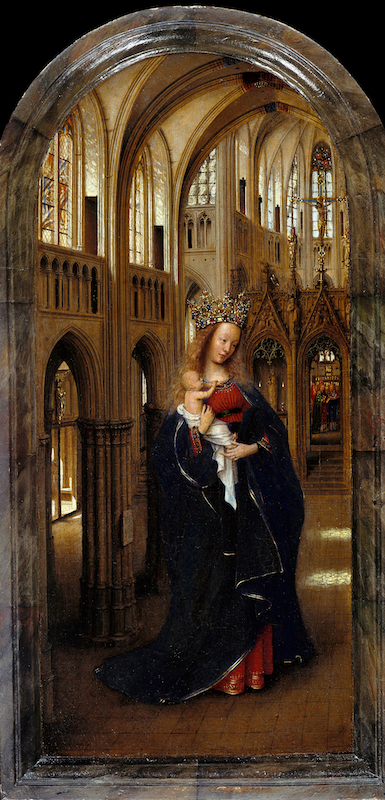
Lutherans are quite persnickety about theology, and necessarily so. As a layman, I may not be as well-equipped as my pastor on the finer points of our theological differences with Roman Catholicism, but when it comes to artwork, I can spot the differences a mile away.
Representations of Mary, the mother of our Lord, often evoke a great deal of consternation among Lutherans. Part of the reason that depictions of her bring out strong differences of opinion among Lutherans is because of the visual confusion of Mary with other things — most notably the church — and the resulting hot, artistic mess is symptomatic of that confusion. How do we unravel this visual knot?
Lutherans hold Mary, the mother of our Lord Jesus Christ, in high esteem, for she is, after all, “blessed … among women” (Luke 1:42). However, Lutherans do differ among themselves regarding how much esteem she is due. Unlike some parts of Christendom, Lutherans do not usually place her among the “common rabble.” Rather, Lutherans confess with the historic church that she is the “mother of God,” and so Lutherans depict her in various vignettes throughout the life of Jesus Christ.
Roman Catholicism, however, tends to laud Mary too much, and it shows in their art. For example, they cannot show her without a halo. Halos in themselves are not wrong; they express the glory of the Lord as it is reflected in His sainted followers — Mary included. More often, however, Roman Catholic art portrays Mary with an ornate crown instead of a halo. This depiction steps beyond the Word of Scripture and ascribes to Mary an honor God’s Word does not. It is especially evident in depictions of the Madonna and Christ Child, when her crown is larger and gives the impression that she “pulls rank” on the Christ Child. Even when Mary is depicted alone in Roman Catholic art, she will most likely sport an elaborate crown. But she isn’t the only crowned woman in Christian art.
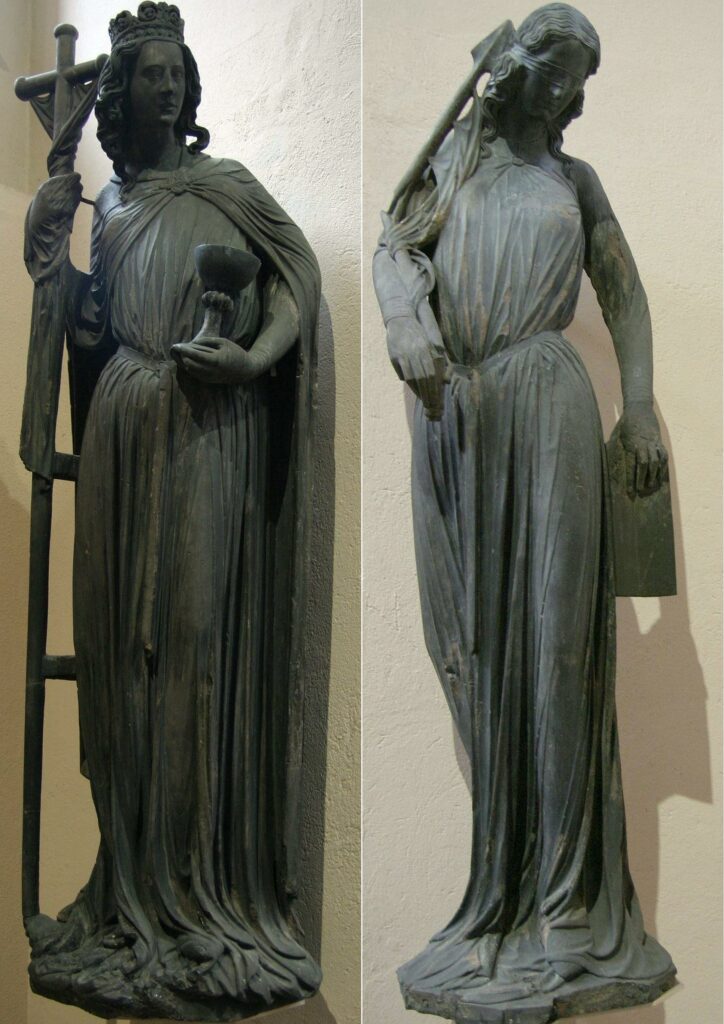
“The Crowned Woman” is a visually distinct concept that was often used in the medieval church. These artists understood the Crowned Woman to be a mature representation of the church. The Crowned Woman is often shown holding a staff, chalice or scroll. Sculpted versions of the Crowned Woman occur in many European cathedrals, but what sets these images apart from depictions of Mary is the presence of a sculpted counterpart nearby – “The Synagogue.” The Synagogue is depicted as a blindfolded woman holding a broken staff and on the verge of tripping or falling. This Jewish counterpart is not a display of anti-Semitism, but rather a figure representing the denial of the Messiah among those who traded anticipation of the Christ for adherence to empty tradition.
Other artistic representations of crowned or haloed women also exist in church art. The point is this: It is important to look carefully at images of crowned women depicted in churches and Christian artwork. Context is the key. While Lutherans owe respect to the mother of our Lord, we do not elevate her in such a way that she receives the honor that belongs to her Son and our Savior.
We honor and respect Mary for who she is, the mother of our Lord. We give her honor and respect because she points beyond herself to her greater Son. Our artistic depictions of her should reflect this understanding.
Fig. 1: Public domain. Access here.
Fig. 2: Wikimedia Commons / CC BY-SA 2.0 FR
Featured image: LCMS Communications/Erik M. Lunsford


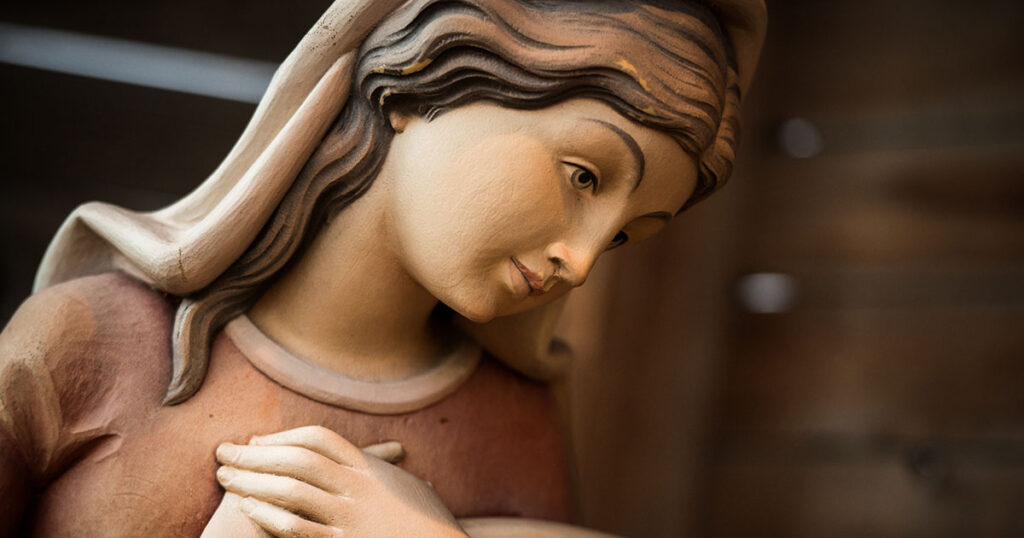
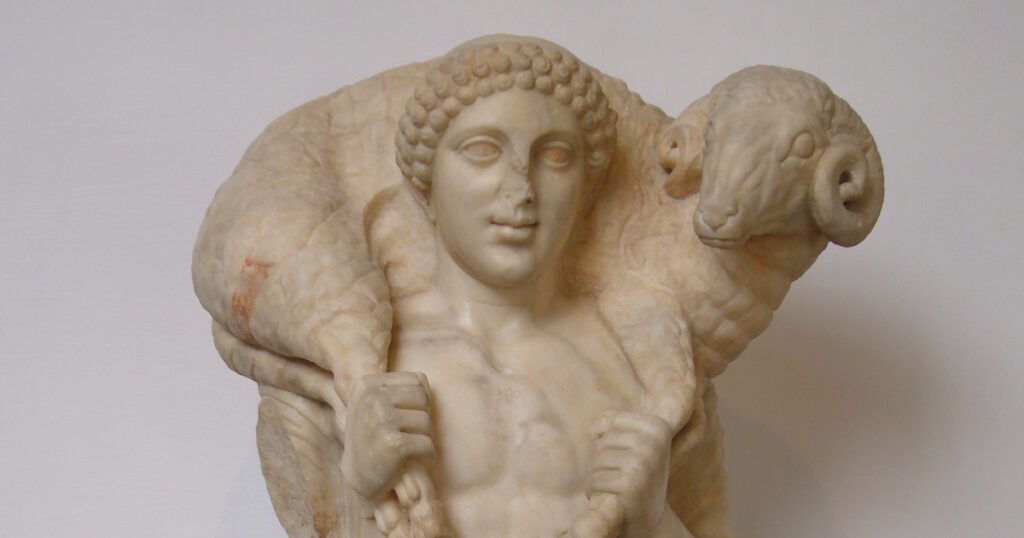
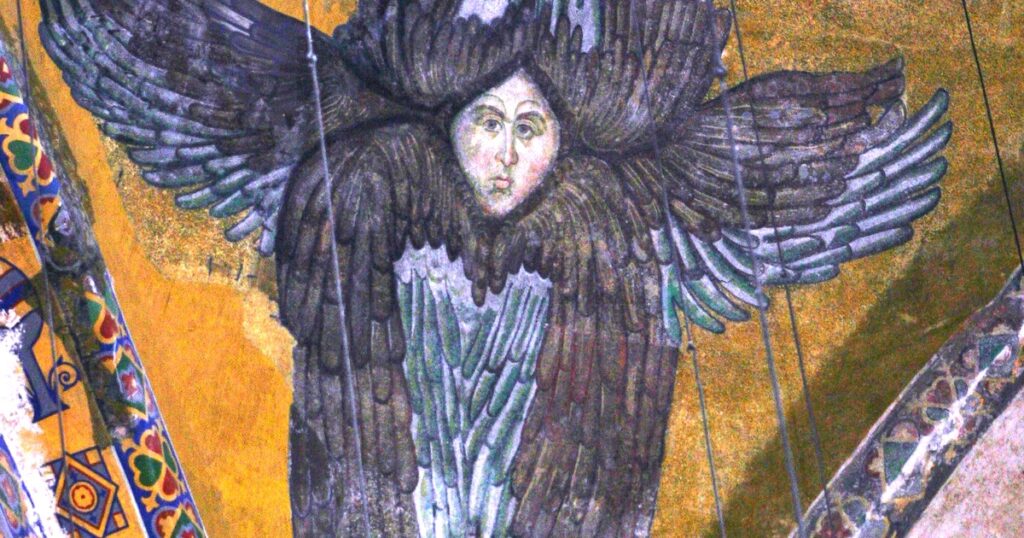
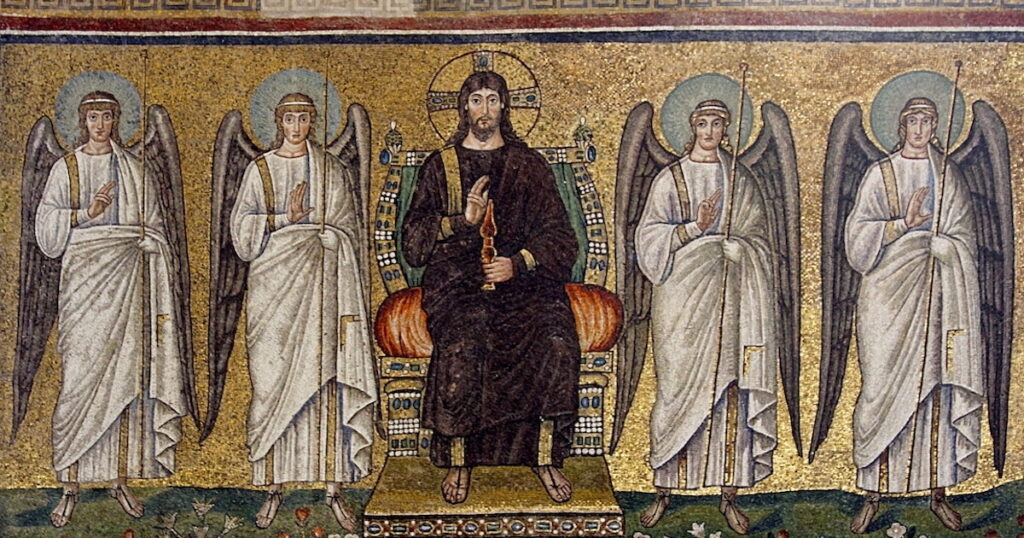
I have seen this claim that Lutherans confess Mary as “Mother of God” made a few places, but please can you tell me “where” this is confessed. Is it in the Book of Concord? And where? Or is it just vaguely asserted that Lutherans “confess” it because in some writing of Martin Luther outside the Book of Concord he is still using this Papist terminology?
Search it, it’s in the Formula of Concord I believe (which also clearly confesses her as “pure, holy, ever-virgin Mary.”
Lutherans need to stop being so easily offended by what Normie Evangelical Baptists think of us, and actually follow our beautiful Confessions!
Beautiful art and a wonderful explanation of how we revere the Mother Mary but do not hold her above our Lord Jesus Christ. God has blessed you so much and may He continue to use you and your talents to spread God’s word.